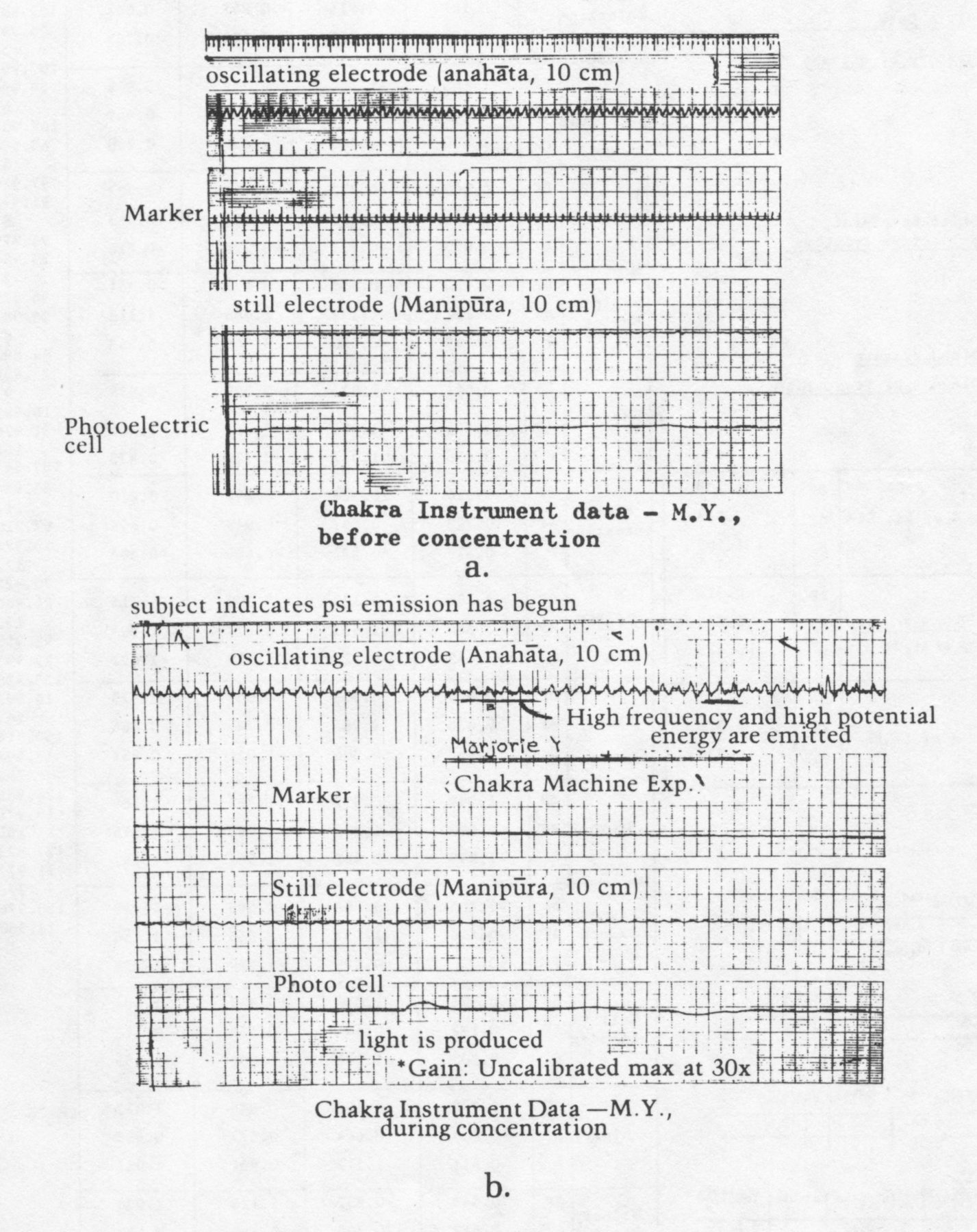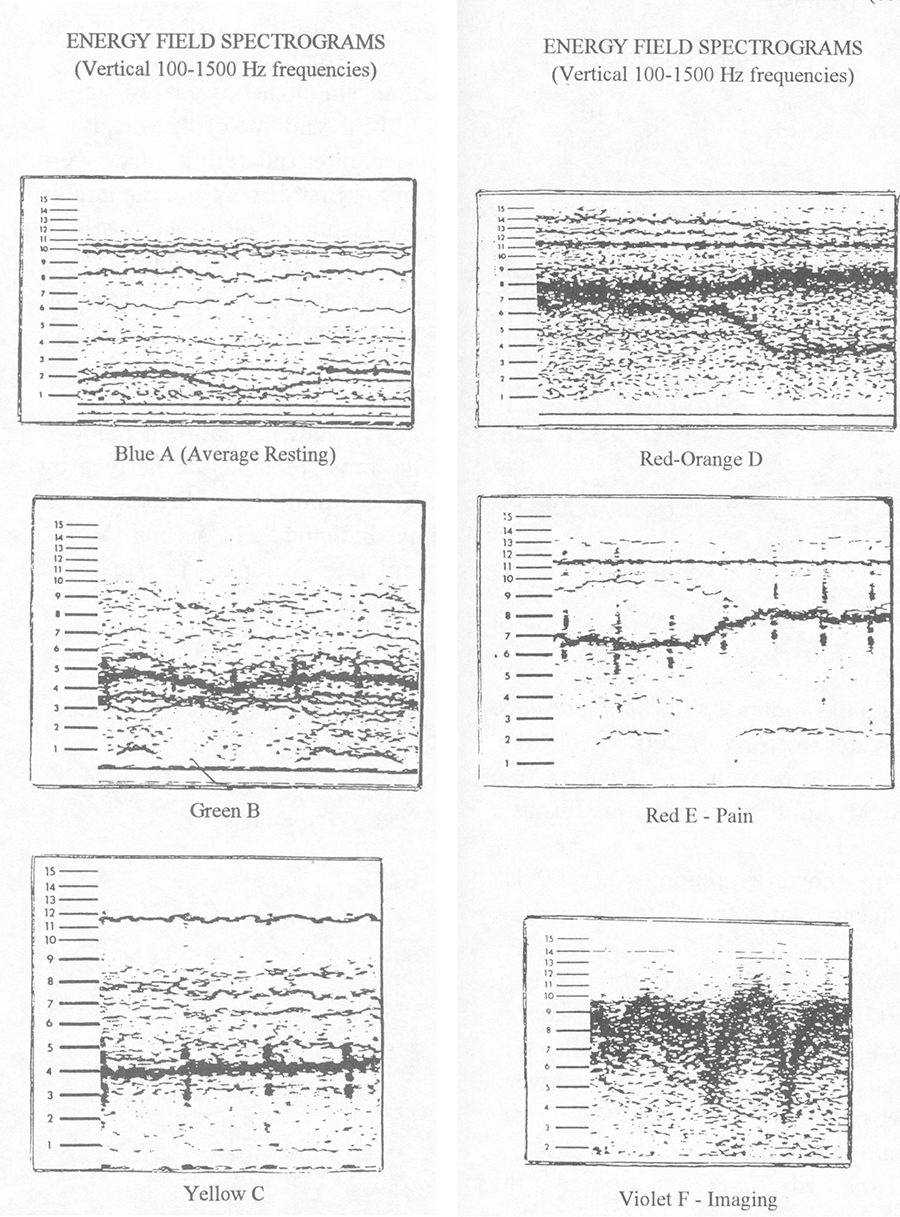There have been very few scientific studies of the chakras.
- Dr. Hiroshi Motoyama did a series of experiments where he measured electrical, magnetic and light emissions from particular chakras [1]. The human subjects sat on a chair in a shielded, grounded, light-proof room. Motoyama positioned round copper electrodes in front of one or two chakras (e.g., heart and solar plexus chakras), with a photoelectric cell also positioned in front of the subject. A magnetometer was positioned at the feet of the subject. In these experiments, he detected both high frequency oscillations and light emission as the subjects meditated on a particular chakra.
For example, Motoyama asked Subject M.Y. to concentrate on the heart chakra, and to indicate when she sensed energy being emitted from her heart chakra, by pushing a button. When she indicated energy emission, the photoelectric cell showed a weak light generated in the light-proof room, and high-frequency oscillations were detected with the copper electrode adjacent to the heart chakra (anahata), but not near the solar plexus chakra (manipura). Here is the chart recording of the experiment with Subject M.Y.

From these experiments, Motoyama concluded that psi energy working in the chakras can create detectable energy in the physical dimension.
- Dr. Valerie Hunt at UCLA placed silver/silver chloride electrodes at chakra locations on the bodies of volunteers as they received healing from healers (either Rolfing or shamanic) [2, 3]. The frequency spectra and amplitude recorded at each chakra location were compared with the observations of an aura reader, Rosalyn Bruyere [4]. Because the electrodes were placed directly on the body, Hunt had to filter out the heart, muscle and brain frequencies which occur below 250Hz. Within the frequency range, 500 Hz – 20,000 Hz, Hunt discovered unique waveforms and frequency spectra corresponding to the colors reported by the aura reader. Here are the frequency spectra Hunt found associated with particular aura colors:

The experiments of Motoyama and Hunt are preliminary, but suggest that further scientific studies of the chakras may be worthwhile.
To share your experiences of the chakras in an online survey, click here.
References
- Motoyama H (1981) Theories of the Chakras: Bridge to Higher Consciousness. Wheaton, IL: Theosophical Publishing House, pp. 238-279.
- Hunt VV, Massey WW, Weinberg R, Bruyere R, Hahn PM (1977) Project Report: A Study of Structural Integration from Neuromuscular, Energy Field, and Emotional Approaches. Private printing: Sponsored by the Rolf Institute of Structural Integration, Boulder, CO.
- Hunt VV (1989) Infinite Mind: Science of the Human Vibrations of Consciousness. Malibu, CA: Malibu Press.
- Bruyere RL (1989) Wheels of Light: Chakras, Auras, and the Healing Energy of the Body. New York, NY: Simon & Schuster.